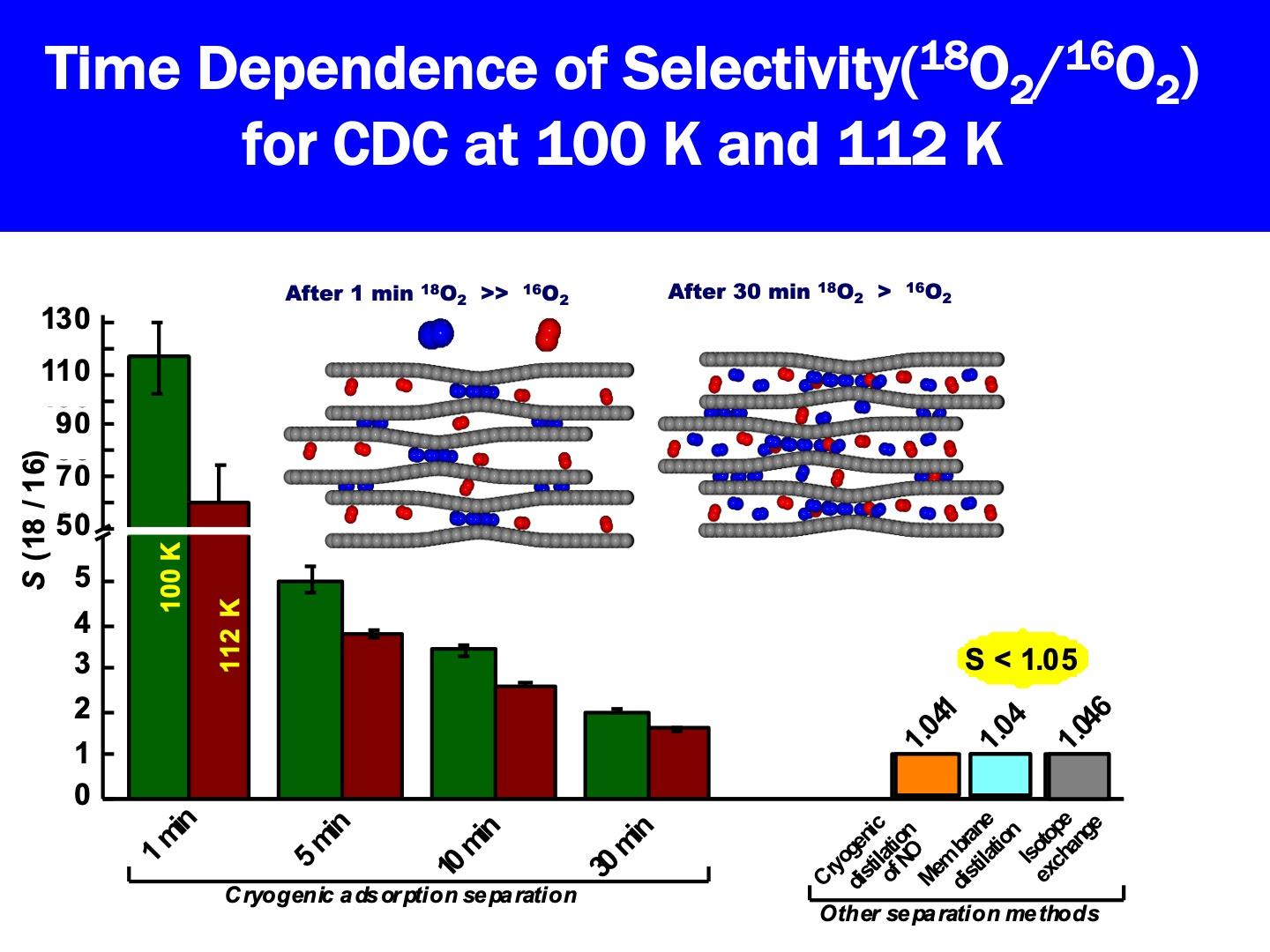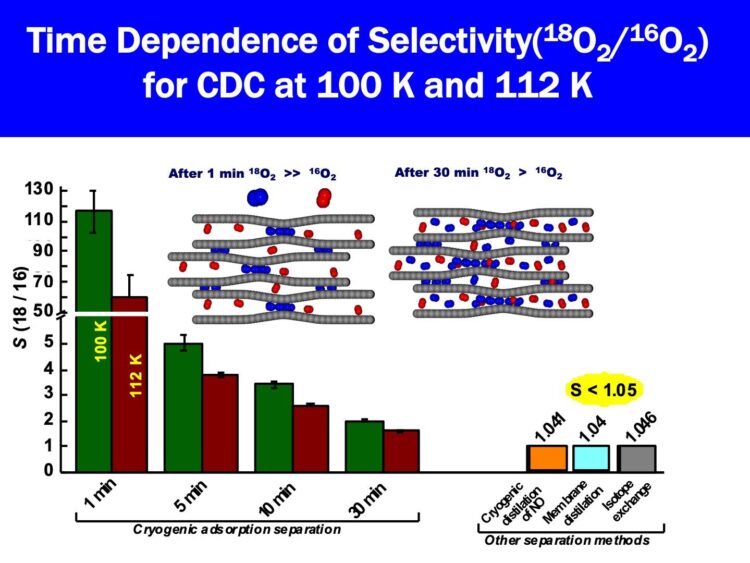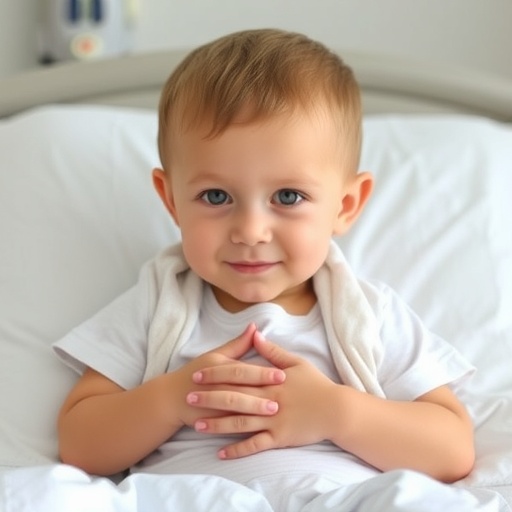
Credit: Copyright 2021, Nature Communications, Licensed under CC BY 4.0
Positron Emission Tomography (PET) plays a major role in the early detection of various types of cancer. A research group led by Specially Appointed Professor Katsumi Kaneko of the Research Initiative for Supra-Materials (RISM), Shinshu University have discovered a method to separate oxygen-18 from oxygen-16, an essential isotope for PET diagnosis, at high speed and high efficiency. The results of this research were recently published online in the journal Nature Communications.
The novel method for the rapid and efficient separation of O-18 from O2-16, which is abundant in the atmosphere, was carried out with nanoporous carbon, which is made of pores smaller than 1 nanometer. When a mixture of O2-16 and O2-18 is introduced into the nanoporous carbon, the O2-18 is preferentially adsorbed and is efficiently separated from O2-16. The experimental separation of O2-18 from O2-16 was also conducted using the low-temperature waste heat from a natural gas storage facility.
O-18 plays a major role in the early detection of cancer. Taking advantage of the property of cancer cells which take up much more glucose than normal cells, doctors inject a drug called 18F-FDG (fluorodeoxyglucose), which is an index of glucose metabolism and uses a PET machine to clarify which part of the body has cancer. 18F-FDG is a drug in which fluorine-18 (18F), which emits positive electricity, is attached to glucose. 18F-FDG is produced by a nuclear reaction in which O-18 is introduced before the protons are injected. Therefore, O-18 is an important substance indispensable for PET diagnosis but was difficult to procure because only 0.2% of naturally occurring oxygen is O-18. In order to separate O-18 from the majority of O-16 found in the atmosphere, it was necessary to distill O-18 from O-16, even though they have very similar boiling points. This distillation required precise technology and took more than 6 months to complete.
The novel method using nanoporous carbon to distill O-18 can be used not only for PET diagnosis but for research on dementia, and this novel method can be applied to the separation of carbon and nitrogen isotopes, and other molecules useful for isotopic analysis methods and therapeutic cancer drugs. The group expects more demand for this method and substance in the future.
###
Two co-authors of the international collaborative study sent comments for the press release:
Professor Yury Gogotsi Drexel University, USA
It is exciting to see that my guest professorship at Shinshu University allowed me to participate in this very important multi-institutional project that led to development of a new process for separation of oxygen isotopes using carbon nanomaterials developed in my lab at Drexel University.
Professor Karl Johnson of University of Pittsburgh, USA
It was an exciting and challenging experience to work on this research project with Professor Kaneko, Professor Gogotsi, their teams, and the others. The experimental work was amazing and really pushed the limits of our theoretical capabilities to discover how quantum effects could be so important for relatively heavy isotopes.
Please read the paper for more information:
Nature Communications (2021) https:/
Acknowledgements:
K.K. acknowledges project Japan Science Technology Agency (JST) CREST “Creation of Innovative Functional Materials with Advanced Properties by Hyper-nanospace Design” and partial support by the Grant-in-Aid for Scientific Research (B) (17H03039) and the OPERA JST project (JPMJOP1722). SKU was supported by the JST-CREST and OPERA projects. H.T., R.F., and F.V.-B. are supported by TAKAGI Co., Ltd. Funding for A.B. and J.K.J. was provided by the National Science Foundation under Award No. CBET1703266. Simulations were performed using the computational resources provided by the Center for Research Computing at the University of Pittsburgh and Extreme Science and Engineering Discovery Environment (XSEDE), which is supported by National Science Foundation grant number ACI-1548562, under allocation No. TG- DMR110091 and the Pawsey Supercomputing Centre, with funding from the Govern- ment of Australia and the Government of Western Australia. C.D.T. and I.S.M. are supported by the Australian Research Council under grant FT140100191. CDC synthesis was supported as part of the Fluid Interface Reactions, Structures and Transport (FIRST) Center, an Energy Frontier Research Center funded by the U.S. Department of Energy, Office of Science, and Office of Basic Energy Sciences.
Media Contact
Hitomi Thompson
[email protected]
Related Journal Article
http://dx.





